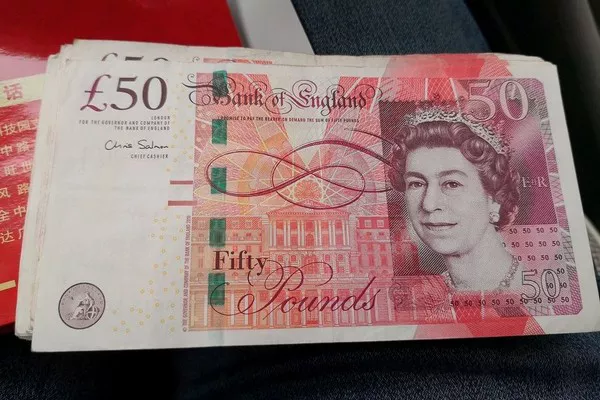The exchange rate between the British Pound Sterling (GBP) and the Euro (EUR) has witnessed its fair share of fluctuations over the years. These movements are influenced by various factors, including economic conditions, political events, and market sentiment. In the world of finance, exchange rates are critical indicators of a nation’s economic health and its position in the global economy. For individuals, businesses, and governments, these rates can significantly impact financial decisions. In this article, we will delve into the historical data to uncover the highest pound to euro exchange rate and the factors that drove it to that peak.
Understanding Exchange Rates
Before we delve into the historical exchange rates between the British Pound and the Euro, it’s essential to grasp what exchange rates are and how they function. An exchange rate is the value of one country’s currency concerning another. For example, if the GBP/EUR exchange rate is 1.15, it means that one British Pound is equivalent to 1.15 Euros.
Exchange rates are determined by the foreign exchange market, which is one of the largest and most liquid financial markets globally. Various factors influence exchange rates, including interest rates, inflation, economic stability, geopolitical events, and market speculation. Currencies appreciate or depreciate concerning one another due to these factors.
The Historical Performance of the Pound to Euro Exchange Rate
Over the years, the pound to euro exchange rate has seen numerous highs and lows. To find the highest exchange rate, we must delve into history and analyze the performance of these two currencies.
1. The Launch of the Euro (1999):
The Euro, the official currency of the Eurozone, was introduced in electronic form on January 1, 1999. However, it wasn’t until January 1, 2002, that Euro banknotes and coins entered circulation. The exchange rate at the Euro’s launch was set at 1 Euro (EUR) = 0.7107 British Pounds (GBP). At this point, the Euro was relatively weaker than the Pound.
2. The Pound’s Strength (2000s):
During the early 2000s, the British Pound gained strength against the Euro. The exchange rate crossed the 1.5 GBP/EUR mark, with the Pound being stronger. This period was characterized by favorable economic conditions in the United Kingdom.
3. Global Financial Crisis (2008):
The global financial crisis of 2008 had a profound impact on currency markets. The British Pound weakened significantly against the Euro. In December 2008, the exchange rate reached a low of around 1 GBP = 1.02 EUR. The economic uncertainty and banking sector turmoil in the United Kingdom contributed to this decline.
4. Brexit Referendum (2016):
One of the most significant events affecting the Pound to Euro exchange rate was the Brexit referendum in 2016. When the referendum results were announced, and it became clear that the United Kingdom had voted to leave the European Union, the Pound plummeted. It reached a low of approximately 1 GBP = 1 EUR during the immediate aftermath of the referendum.
5. Recent Fluctuations (2020s):
In the years following the Brexit referendum, the exchange rate continued to be volatile, reacting to ongoing Brexit negotiations, economic developments, and the global COVID-19 pandemic. The Pound has experienced periods of strength and weakness concerning the Euro.
The Highest Pound to Euro Exchange Rate
The highest Pound to Euro exchange rate in history occurred in December 2008 when the British Pound was trading at approximately 1 GBP = 1.46 EUR. During this time, the Pound was remarkably strong against the Euro. Several factors contributed to this peak:
Global Financial Crisis: The 2008 financial crisis had created significant turmoil in financial markets. As a result, investors sought safe-haven currencies, and the British Pound was perceived as a relatively stable option.
Interest Rate Differentials: The interest rates set by the Bank of England were higher than those of the European Central Bank. This interest rate differential made holding Pound-denominated assets more attractive to investors.
Market Sentiment: Market sentiment played a crucial role in currency movements. During this period, investors had confidence in the British economy’s resilience, further supporting the Pound.
It’s important to note that exchange rates are subject to constant fluctuations. The 1.46 GBP/EUR exchange rate in 2008 was an exceptional moment in the history of these two currencies. Subsequent years have seen significant volatility and changes due to various economic and geopolitical events.
Factors Influencing Exchange Rates
Several key factors influence exchange rates, and understanding these is essential for comprehending the historical and current performance of the Pound to Euro exchange rate:
Interest Rates: Differences in interest rates between two countries can affect their exchange rates. Higher interest rates often attract foreign capital and lead to a stronger currency.
Economic Conditions: Economic stability, growth, and inflation rates are fundamental drivers of exchange rate movements.
Geopolitical Events: Events like the Brexit referendum can have an immediate and substantial impact on exchange rates.
Market Sentiment: Traders’ perceptions, expectations, and speculations can drive short-term currency movements.
Central Bank Policies: Central banks’ decisions on monetary policy, such as interest rate changes or quantitative easing, can influence a country’s currency.
Conclusion
The highest Pound to Euro exchange rate in history, at approximately 1 GBP = 1.46 EUR, occurred during the global financial crisis of 2008. Several factors, including the crisis itself, interest rate differentials, and market sentiment.


